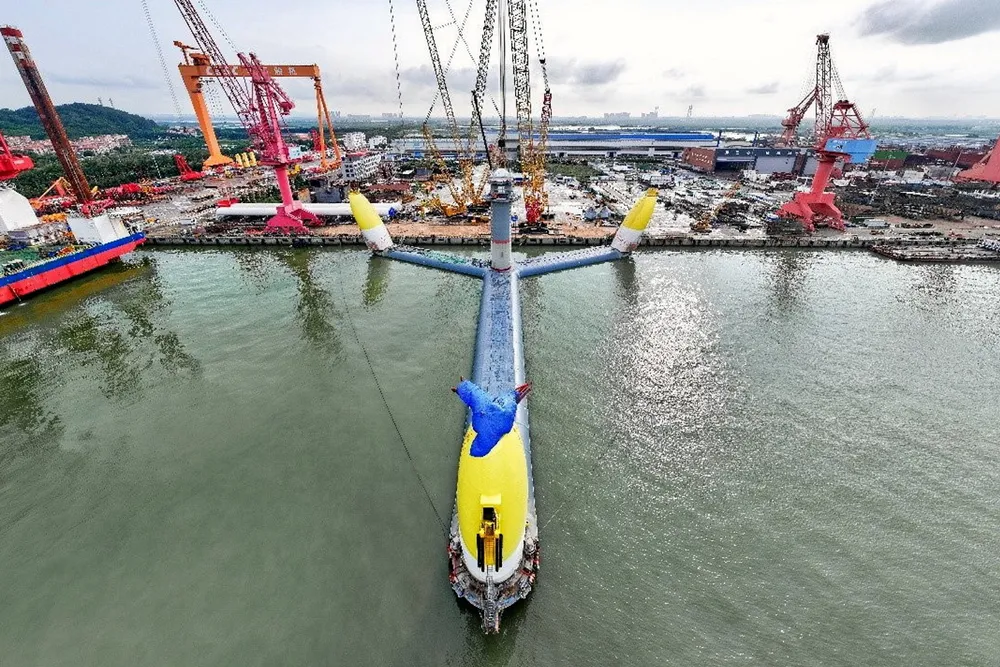GWEC cuts floating wind forecast as challenges to growth stack up
Sector has felt economic headwinds of recent years more than fixed-bottom precisely because designs and industrialisation are less mature

The risk to supply chains posed by a possible shift toward restrictive trade policies and local content requirements has been included among a list of factors that persuaded the Global Wind Energy Council to scale down its forecasts for floating wind in a report published today (Monday).
The retreat was most evident for offshore floating wind, with GWEC cutting its previous forecast by 22%, with 8.5GW of offshore wind now expected to be in place by 2030.
GWEC also said floating wind power is unlikely to reach the full commercialisation phase until the end of the current decade, whereas its previous report had suggested that this milestone would arrive in 2026-27.
The reasons given for this included:
- Floating wind is more expensive that bottom-fixed projects and increased capital costs have accentuated this differential
- Floating foundation technology is not mature and standardisation or existing floating foundations designs remains low, which makes it harder for developers to mitigate risk and cost
- There is a lack of port infrastructure that can accommodate foundation manufacturing and assembly, as well as increased demand for mooring and anchoring vessels that can support the installation.
- Bottlenecks in the implementation of floating foundation projects is likely to occur if restrictive trade policies and local content requirements come to play.
By the end of the decade, however, GWEC forecast that “multi-GW levels of new floating wind” will be achieved, with the UK, South Korea, China, the US and Portugal tipped to be the top five markets,
GWEC expects Europe to contribute 60% of total floating wind installations added in 2024-33, followed by APAC (33%) and North America (7%).
Confidence in floating wind
In its assessment of recent trends in offshore floating wind, GWEC noted delays such as Norway’s decision to push award of 1.5GW of floating wind capacity in the Utsira Nord lease area back to 2025.
But the report also commented on the successful bid by Eolico and Baywa.re in France’s commercial scale floating wind tender off the coast of Brittany.
Here GWEC noted that the bid of €86.45($92.61)/MWh was just one cent/kWh higher than the strike price offered for fixed-bottom offshore wind in the UK’s AR6 allocation round for CfDs, "showing the developers’ confidence in the commercial success of floating wind".
The report forecast that a total of 31GW of floating wind is likely to be installed worldwide by the end of 2033, bringing its contribution to total offshore wind installations from today’s 0.3% to 6%.
Restrictive risk
The GWEC report considered global trade issues in more detail in its section on supply chain issues, warning that bottlenecks are set to emerge across the wider global wind supply chain
GWEC acknowledged that events of the last few years, from the pandemic to the invasion of Ukraine to multiple international logistics incidents, have shifted the focus on supply chains from price and flexibility to resilience and dependencies.
"Increased uncertainty in geopolitics and the experience of price volatility of commodities, materials, labour and logistics have prompted policymakers to shore up their own economic security while advancing the energy transition," the report noted.
"The risk for the offshore wind sector is that measures put in place to increase supply chain resilience — whether in the form of local content incentive packages or trade defence mechanisms — may result in additional hurdles for market participation, higher costs that must be distributed along the value chain to consumers and, ultimately, a lowdown in deployment," the report warned.
GWEC urged an industry response geared to preparation for risks on the horizon, "embracing better cooperation, standardisation and sustainable innovation that can help to ride out the turbulence of the macro environment".
GWEC also repeated the mantra that supply chain viability depends on the fundamental principles of growth and scale.
"Stronger volumes and stable policies will create the business environments needed for a thriving supply chain. And the growth opportunity ahead for offshore wind is substantial," it noted.
(Copyright)